- You are here:
- Home »
- Indoor Plants
- » Zebra Vine Care Guide
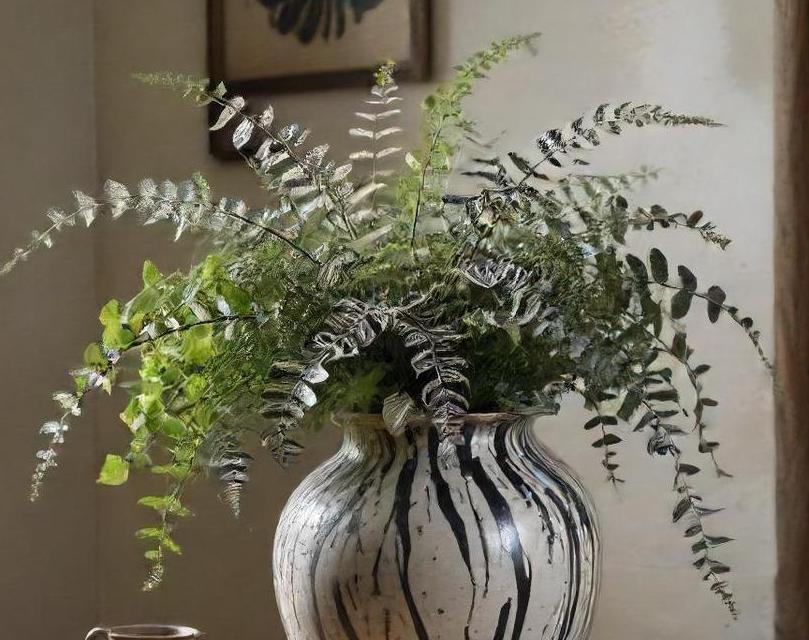
Zebra Vine Care Guide
Indoor plants have become an indispensable element of interior decor, not only for their aesthetic appeal but also for their ability to purify the air and create a calming ambiance. Among the plethora of indoor plants available, the Zebra Vine stands out for its striking foliage and ease of care. In this comprehensive guide, we delve into the world of Zebra Vine, exploring its botanical characteristics, historical and cultural significance, common names and varieties, and more.
Contents
- 1 What Is Zebra Vine?
- 2 Botanical Characteristics
- 3 Historical And Cultural Significance
- 4 Common Names And Varieties
- 5 Light Requirements
- 6 Soil Requirements
- 7 Temperature Requirements
- 8 Humidity Requirements
- 9 Watering Needs For Zebra Vine
- 10 Fertilization
- 11 How To Plant Zebra Vine
- 12 Potting
- 13 Pruning Techniques For Zebra Vine
- 14 Propagation Methods For Zebra Vine
- 15 Troubleshooting Problems With Planting Zebra Vine Indoors
- 16 Conclusion
- 17 FAQS
What Is Zebra Vine?
The Zebra Vine, scientifically known as Ceropegia woodii, is a charming trailing plant native to South Africa. Belonging to the genus Ceropegia within the family Apocynaceae, this perennial succulent is renowned for its distinctive foliage, which resembles the stripes of a zebra, hence its common name. While primarily cultivated as an indoor plant, the Zebra Vine can also thrive in outdoor settings with the right conditions.
Botanical Characteristics
Appearance: The most striking feature of the Zebra Vine is its small, heart-shaped leaves that are adorned with silver markings resembling zebra stripes, hence the name. These leaves grow on slender, trailing stems that can extend up to several feet in length, making the plant ideal for hanging baskets or cascading over shelves.
Flowers: While the foliage steals the spotlight, the Zebra Vine also produces unique flowers. These small, tubular blooms have a delicate appearance and typically boast shades of pink or purple with intricate patterns. However, flowering is relatively rare in indoor settings and may require specific environmental conditions to occur.
Roots: Like many succulent plants, the Zebra Vine has tuberous roots that store water, enabling the plant to withstand periods of drought. These roots also contribute to the plant’s ability to thrive in a variety of conditions, making it relatively low-maintenance.
Environmental Requirements
Light: Zebra Vine thrives in bright, indirect light. While it can tolerate some shade, too little light may result in leggy growth and diminished foliage coloration. Placing the plant near a north or east-facing window is ideal to provide the right balance of light intensity.
Temperature: This plant prefers temperatures between 65°F to 75°F (18°C to 24°C) during the day and slightly cooler temperatures at night. Avoid exposing it to sudden temperature fluctuations or drafts, as this can stress the plant and hinder its growth.
Humidity: While the Zebra Vine can adapt to average indoor humidity levels, it appreciates slightly higher humidity. Regular misting or placing a humidifier nearby can help create a more favorable environment, especially during dry winter months.
Soil: Well-draining soil is crucial for the Zebra Vine to prevent waterlogging, which can lead to root rot. A mix of potting soil and perlite or sand works well, ensuring adequate drainage while retaining some moisture.
Watering: As a succulent, the Zebra Vine is drought-tolerant and prefers to dry out between waterings. Water thoroughly when the top inch of soil feels dry, allowing any excess water to drain away. Overwatering should be avoided, as it can cause root rot and other issues.
Historical And Cultural Significance

The Zebra Vine has a rich history intertwined with human culture, both as a decorative plant and as a symbol in various traditions.
Indigenous Roots
Originating from South Africa, the Zebra Vine has been a part of indigenous cultures for centuries. While exact historical records are scarce, it is believed that native peoples utilized the plant for its ornamental foliage and, potentially, its medicinal properties. The succulent nature of the plant made it well-suited to the arid climates of its native habitat, where it could thrive with minimal water.
Decorative Symbolism
In contemporary culture, the Zebra Vine has garnered popularity as a decorative houseplant, admired for its unique appearance and ease of care. Its trailing habit and striking foliage make it a favorite choice for hanging baskets, where it can add a touch of greenery to any indoor space. Additionally, the plant’s resilience and adaptability have contributed to its widespread appeal, appealing to both seasoned gardeners and beginners alike.
Symbolism In Folklore
While the Zebra Vine may not have the same symbolic significance as other plants in folklore, its distinctive appearance has inspired various interpretations. In some cultures, the contrasting colors of the foliage symbolize harmony and balance, while in others, the plant is associated with resilience and endurance due to its ability to thrive in adverse conditions. These symbolic interpretations serve to enhance the allure of the Zebra Vine, elevating it beyond a mere decorative plant to a symbol of deeper significance.
Common Names And Varieties
The Zebra Vine is known by several common names, reflecting its widespread cultivation and popularity among plant enthusiasts. Additionally, there are a few notable varieties and cultivars that showcase unique characteristics.
Common Names
-
Zebra Plant: This name is derived from the plant’s striking foliage, which bears a resemblance to the stripes of a zebra. It is perhaps the most widely recognized common name for Ceropegia woodii.
-
String of Hearts: Another common moniker for the Zebra Vine, this name refers to the plant’s trailing stems adorned with heart-shaped leaves. It captures the delicate beauty of the plant and its graceful growth habit.
-
Rosary Vine: This name alludes to the plant’s tuberous roots, which resemble rosary beads. It is often used interchangeably with other common names and reflects the plant’s association with spirituality and meditation.
Varieties And Cultivars
While the species Ceropegia woodii remains the most commonly cultivated variety of Zebra Vine, there are a few notable cultivars that offer unique characteristics:
-
‘Variegata’: This cultivar features leaves with variegated patterns, including shades of white, cream, and green. It adds an extra layer of visual interest to the plant and is prized by collectors for its rarity.
-
‘Silver Glory’: Known for its particularly striking silver markings, this cultivar boasts foliage that resembles fine silver filigree. It is highly sought after for its ornamental value and makes a stunning addition to any indoor garden.
-
‘String of Spades’: This cultivar features leaves that are shaped like spades, adding a whimsical twist to the traditional heart-shaped foliage of the Zebra Vine. It is a favorite among collectors for its unique leaf shape and charming appearance.
The Zebra Vine (Ceropegia woodii) is a captivating indoor plant prized for its striking foliage, trailing habit, and ease of care. Native to South Africa, this perennial succulent has a rich history rooted in indigenous cultures and has gained widespread popularity as a decorative houseplant in contemporary times. Its unique appearance, combined with its resilience and adaptability, has endeared it to plant enthusiasts around the world, making it a beloved addition to any indoor garden. Whether adorning a hanging basket or cascading over shelves, the Zebra Vine adds a touch of elegance and charm to any indoor space, making it a must-have for both seasoned gardeners and beginners alike.
Light Requirements
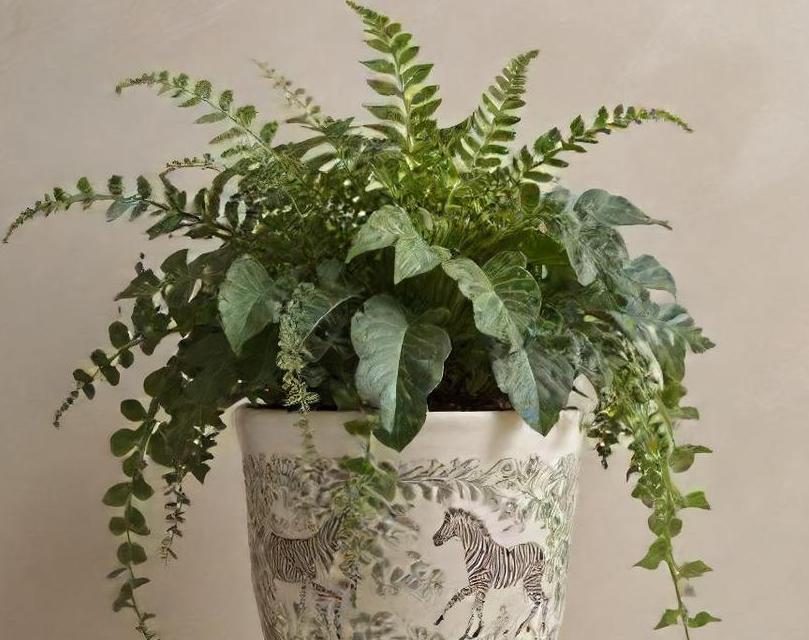
The Zebra Vine, scientifically known as Ceropegia woodii, is a charming and distinctive indoor plant that belongs to the genus Ceropegia in the family Apocynaceae. Its common name, Zebra Vine, is derived from the attractive pattern adorning its leaves, reminiscent of zebra stripes. Originating from South Africa, this plant has gained popularity worldwide due to its unique appearance and relatively easy care requirements. With its trailing vines and heart-shaped leaves adorned with silver veins, the Zebra Vine adds a touch of elegance and allure to any indoor space, making it a favorite among plant enthusiasts and beginners alike.
Proper lighting is crucial for the healthy growth and development of the Zebra Vine. While it thrives in bright, indirect light, it is essential to avoid placing it in direct sunlight, as this can lead to sunburn and damage to the delicate foliage. Ideally, position your Zebra Vine near a north or east-facing window where it can receive bright, filtered sunlight throughout the day.
If natural light is limited in your indoor space, you can supplement with artificial lighting using fluorescent or LED grow lights. Place the lights approximately 6 to 12 inches above the plant and provide 12 to 16 hours of light per day, mimicking natural daylight conditions.
Regularly monitor your Zebra Vine for signs of light stress, such as pale or yellowing leaves, and adjust its placement accordingly to ensure it receives the optimal amount of light for healthy growth.
Soil Requirements
Choosing the right soil mix is essential for providing the Zebra Vine with the necessary nutrients and drainage for robust growth. A well-draining potting mix is ideal for preventing waterlogged conditions, which can lead to root rot and other issues.
You can create a suitable soil mix for your Zebra Vine by combining equal parts of peat moss, perlite, and coarse sand or orchid bark. This blend provides excellent drainage while retaining sufficient moisture to keep the plant hydrated.
Alternatively, you can opt for a pre-made succulent or cactus potting mix, which is readily available at most garden centers and nurseries. These mixes are formulated to provide the ideal balance of drainage and aeration for succulent plants like the Zebra Vine.
When repotting your Zebra Vine, choose a container with drainage holes to prevent water from pooling at the bottom, and ensure that the roots have ample space to spread and grow.
Temperature Requirements
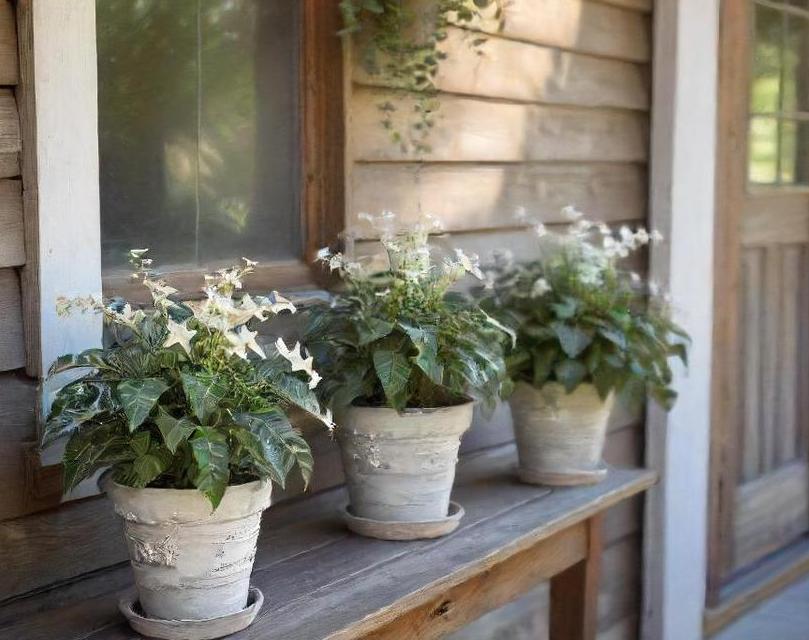
Maintaining the proper temperature is essential for the overall health and well-being of the Zebra Vine. While it can tolerate a range of temperatures, it thrives in warm, consistent conditions similar to its native habitat in South Africa.
Ideally, aim to keep your Zebra Vine in a room where the temperature remains between 65°F to 75°F (18°C to 24°C) during the day and no lower than 50°F (10°C) at night. Avoid placing the plant near drafty windows, doors, or heating vents, as sudden temperature fluctuations can stress the plant and affect its growth.
During the summer months, you can move your Zebra Vine outdoors to enjoy the warmer temperatures and increased airflow. However, be sure to acclimate the plant gradually to prevent shock and sunburn, and bring it indoors before the temperatures drop below its tolerance level in the fall.
Humidity Requirements
The Zebra Vine thrives in environments with moderate to high humidity levels, similar to the humid conditions found in its native tropical habitat. Adequate humidity is essential for preventing the leaves from drying out and maintaining overall plant health.
To increase humidity around your Zebra Vine, consider implementing the following strategies:
-
Misting: Regularly mist the foliage with room-temperature water to provide a boost of moisture and create a humid microclimate around the plant. Avoid misting excessively, as this can lead to fungal issues and waterlogged soil.
-
Humidifier: Place a humidifier near your Zebra Vine to maintain consistent humidity levels in the surrounding air. Set the humidifier to a moderate setting and monitor the humidity levels regularly with a hygrometer to ensure they remain within the optimal range of 50% to 60%.
-
Pebble Tray: Place a shallow tray filled with water and decorative pebbles beneath the Zebra Vine’s pot. As the water evaporates, it creates humidity around the plant, providing a natural moisture source for the foliage.
-
Grouping Plants: Cluster your Zebra Vine with other houseplants to create a mini indoor jungle, where the collective transpiration helps increase humidity levels.
By implementing these humidity-boosting techniques, you can create a comfortable and conducive environment for your Zebra Vine to thrive and flourish.
The Zebra Vine, with its striking foliage and easy-care nature, makes a delightful addition to any indoor plant collection. By understanding and meeting its specific light, soil, temperature, and humidity requirements, you can ensure that your Zebra Vine remains healthy, vibrant, and visually stunning year-round. From its preference for bright, indirect light to its need for well-draining soil and moderate to high humidity levels, each aspect of care plays a vital role in the overall well-being of this unique plant. With proper attention and maintenance, your Zebra Vine will reward you with its cascading vines and charming foliage, adding beauty and elegance to your indoor space for years to come.
Watering Needs For Zebra Vine
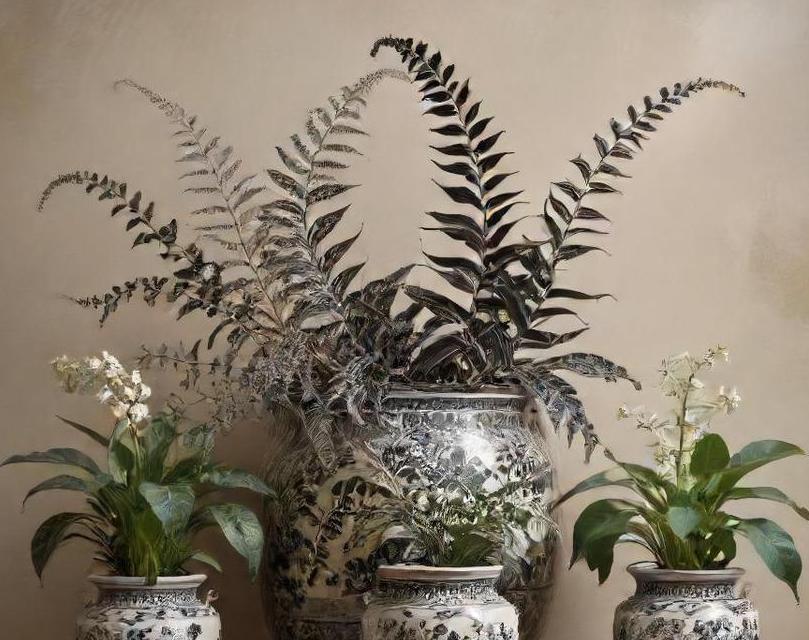
Zebra Vine, scientifically known as Ceropegia woodii, is a charming and popular indoor plant cherished for its trailing vines adorned with small, heart-shaped leaves. Its common name comes from the distinctive patterns on its leaves, resembling the stripes of a zebra. This plant, native to Southern Africa, belongs to the Apocynaceae family and is admired for its low maintenance requirements and unique aesthetic appeal.
Zebra Vine is a perfect choice for those seeking to add a touch of greenery to their indoor spaces without the hassle of high maintenance. Its delicate foliage and trailing habit make it an ideal candidate for hanging baskets or as a trailing accent in plant arrangements. Understanding the specific care requirements of this plant is crucial to ensure its health and vitality.
Proper watering is essential for the health and vigor of Zebra Vine. As with many indoor plants, finding the right balance is key to prevent issues such as root rot or dehydration. Zebra Vine thrives in slightly moist soil, but it’s crucial to avoid overwatering.
Monitoring Soil Moisture: Before watering, it’s advisable to check the moisture level of the soil. Inserting a finger into the soil up to the first knuckle can help determine if watering is necessary. If the soil feels dry to the touch, it’s time to water the plant.
Watering Frequency: The frequency of watering will depend on various factors such as environmental conditions, pot size, and soil composition. Generally, watering once every one to two weeks is sufficient for Zebra Vine during the growing season (spring and summer). In winter, when the plant is in a dormant state, watering can be reduced to prevent waterlogged soil.
Watering Technique: When watering Zebra Vine, it’s important to ensure thorough saturation of the soil while allowing excess water to drain freely from the bottom of the pot. Avoid leaving the plant sitting in standing water, as this can lead to root rot.
Considerations for Humidity: Zebra Vine appreciates moderate to high humidity levels, which can be particularly beneficial in dry indoor environments. Misting the foliage occasionally or placing a humidity tray filled with water and pebbles beneath the plant can help increase humidity levels.
Fertilization
Fertilizing Zebra Vine is essential to provide it with the nutrients necessary for healthy growth and foliage production. However, it’s important not to over-fertilize, as this can lead to fertilizer burn and other issues.
Choosing Fertilizer: Selecting a balanced, water-soluble fertilizer formulated for indoor plants is recommended for Zebra Vine. Look for a fertilizer with equal parts nitrogen, phosphorus, and potassium (N-P-K ratio of 10-10-10 or similar).
Fertilizing Schedule: During the active growing season in spring and summer, Zebra Vine can be fertilized once a month. Dilute the fertilizer to half or quarter strength to avoid overwhelming the plant with nutrients. In winter, when growth slows down, fertilizing can be reduced or suspended altogether.
Application Method: When applying fertilizer, it’s important to water the plant thoroughly beforehand to prevent fertilizer burn. Dilute the fertilizer according to the manufacturer’s instructions and apply it to the soil, avoiding direct contact with the foliage.
Flush Out Excess Salts: Periodically flushing the soil with plain water can help prevent the buildup of excess salts from fertilizers, which can harm the plant’s roots over time. Simply water the plant thoroughly until water runs freely from the drainage holes, then allow the excess water to drain away.
How To Plant Zebra Vine
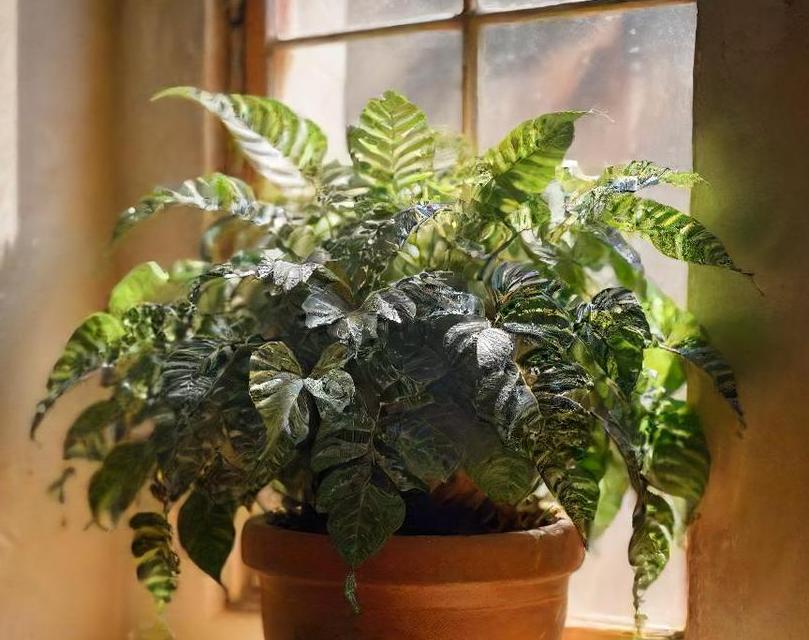
Proper planting techniques are essential to ensure the health and vitality of Zebra Vine. Whether starting from cuttings or transplanting established plants, following these steps can help promote successful growth.
Potting
Choosing a Suitable Container: Select a pot or hanging basket that provides adequate drainage and allows room for the plant to grow and spread its trailing vines. A container with drainage holes at the bottom is essential to prevent waterlogging.
Selecting the Right Soil: Zebra Vine thrives in well-draining, lightweight soil mixtures. A combination of peat moss, perlite, and coarse sand or a commercial potting mix formulated for indoor plants works well. Avoid heavy, compacted soils that retain excess moisture.
Preparing the Plant: If starting from cuttings, ensure that each cutting has at least a few nodes from which new roots can develop. If transplanting from a nursery pot, gently remove the plant from its container, being careful not to damage the roots.
Planting Technique: Create a small hole in the center of the potting mix, slightly larger than the root ball of the plant. Place the plant in the hole, ensuring that the top of the root ball is level with the surface of the soil. Gently backfill around the roots with additional potting mix, pressing lightly to secure the plant in place.
Watering After Planting: Once the plant is potted, water it thoroughly to settle the soil and encourage the establishment of roots. Ensure that excess water drains freely from the bottom of the pot.
Placement and Light Requirements: Zebra Vine thrives in bright, indirect light. Place the plant in a location where it receives plenty of natural light throughout the day, but avoid direct sunlight, as this can scorch the delicate foliage. An east or west-facing window is ideal for providing the right amount of light.
Temperature and Humidity: Zebra Vine prefers moderate temperatures ranging from 65°F to 75°F (18°C to 24°C). It also appreciates moderate to high humidity levels, making it well-suited for bathrooms or kitchens where humidity tends to be higher.
Maintenance: Regular maintenance tasks such as pruning, removing dead or yellowing leaves, and repotting when necessary can help keep Zebra Vine healthy and thriving. Pruning can also help promote bushier growth and prevent the plant from becoming too leggy.
Zebra Vine, with its charming foliage and easy-care requirements, makes a delightful addition to any indoor space. By understanding its specific needs regarding watering, fertilization, and planting, you can ensure that your Zebra Vine thrives and flourishes. With proper care and attention, this beautiful plant will reward you with its trailing vines and striking foliage, adding a touch of greenery and elegance to your home or office environment.
Pruning Techniques For Zebra Vine
Zebra Vine, scientifically known as Ceropegia woodii, is a charming trailing plant native to South Africa. Its unique appearance, characterized by heart-shaped leaves adorned with silver markings, makes it a popular choice among indoor plant enthusiasts. Zebra Vine belongs to the Apocynaceae family and is often referred to by various other names including String of Hearts, Rosary Vine, or Chain of Hearts due to its long, trailing stems adorned with small, heart-shaped leaves.
This delightful plant is not only visually appealing but also relatively easy to care for, making it an excellent choice for both novice and experienced indoor gardeners.
Pruning is an essential aspect of caring for Zebra Vine, as it helps maintain its shape, encourages healthy growth, and prevents the plant from becoming too leggy. Here are some effective pruning techniques for Zebra Vine:
1. Regular Trimming
Regular trimming is crucial for keeping Zebra Vine compact and full. Use clean, sharp scissors or pruning shears to trim the stems back to the desired length. Focus on removing any leggy or straggly growth to promote bushier, more vigorous growth.
2. Pinching
Pinching involves removing the growing tips of the stems to encourage branching and promote a fuller appearance. Simply pinch off the tips of the stems between your thumb and forefinger, taking care not to damage the plant.
3. Removing Yellow Or Dead Leaves
Inspect the plant regularly and remove any yellow or dead leaves to maintain its overall health and appearance. Use clean scissors or pinch off the affected leaves at the base of the stem.
4. Pruning For Shape
If your Zebra Vine is becoming unruly or overgrown, you can prune it back to shape by cutting back the stems selectively. Focus on removing excess growth and shaping the plant according to your preferences.
5. Pruning After Flowering
Zebra Vine produces small, tubular flowers that appear intermittently throughout the year. After the flowering period, you can prune back the stems to tidy up the plant and encourage new growth.
Propagation Methods For Zebra Vine
Propagation is an exciting way to expand your collection of Zebra Vine plants or share them with friends and family. Fortunately, Zebra Vine is relatively easy to propagate using several methods:
1. Stem Cuttings
Stem cuttings are one of the most common methods of propagating Zebra Vine. Here’s how to do it:
- Select a healthy stem with several nodes and cut it just below a node using clean, sharp scissors or pruning shears.
- Remove the leaves from the lower portion of the cutting, leaving a few leaves at the top intact.
- Dip the cut end of the stem in rooting hormone to encourage root development (optional).
- Plant the cutting in a well-draining potting mix and water it thoroughly.
- Place the cutting in a warm, bright location with indirect sunlight and keep the soil consistently moist until roots develop.
2. Division
Zebra Vine can also be propagated by division, especially if the plant has become overcrowded or has multiple stems originating from the same root system. Here’s how to divide Zebra Vine:
- Carefully remove the plant from its pot and gently tease apart the root ball into smaller sections, ensuring that each section has both roots and stems.
- Plant each divided section in its own pot filled with fresh potting mix and water thoroughly.
- Place the newly divided plants in a warm, bright location with indirect sunlight and keep the soil consistently moist until they become established.
3. Water Propagation
Water propagation is another simple method for propagating Zebra Vine. Here’s how to do it:
- Take a healthy stem cutting and place it in a jar or vase filled with clean water, ensuring that at least one node is submerged.
- Place the jar in a warm, bright location with indirect sunlight and change the water regularly to prevent stagnation.
- After a few weeks, you should start to see roots developing from the nodes.
- Once the roots are well-established, carefully transplant the cutting into a pot filled with well-draining potting mix and continue to care for it as usual.
Troubleshooting Problems With Planting Zebra Vine Indoors
While Zebra Vine is generally easy to care for, it may encounter some issues when grown indoors. Here are some common problems you may encounter and how to troubleshoot them:
1. Overwatering
Overwatering can lead to root rot and other fungal diseases in Zebra Vine. To prevent overwatering, allow the top inch of soil to dry out between waterings and ensure that the pot has proper drainage.
2. Underwatering
On the flip side, underwatering can cause the leaves of Zebra Vine to become dry and crispy. Make sure to water the plant thoroughly whenever the top inch of soil feels dry to the touch.
3. Pests
Zebra Vine is susceptible to pests such as aphids, mealybugs, and spider mites. Inspect the plant regularly for signs of pest infestation, such as distorted leaves or sticky residue, and treat the problem promptly with insecticidal soap or neem oil.
4. Poor Lighting
Insufficient light can cause Zebra Vine to become leggy and lose its vibrant coloration. Place the plant in a location with bright, indirect sunlight to ensure healthy growth and development.
5. Cold Drafts
Zebra Vine is sensitive to cold drafts, which can cause its leaves to become damaged or drop prematurely. Keep the plant away from drafty windows or doors, especially during the winter months.
6. Fertilizer Overload
Excessive fertilizer can burn the roots of Zebra Vine and cause leaf discoloration or stunted growth. Use a balanced liquid fertilizer diluted to half strength and apply it sparingly during the growing season.
Conclusion
In conclusion, Zebra Vine is a delightful indoor plant that adds a touch of charm and elegance to any space. With its unique trailing stems and heart-shaped leaves, it is sure to capture the hearts of plant enthusiasts everywhere. By following the pruning techniques, propagation methods, and troubleshooting tips outlined in this guide, you can enjoy a thriving Zebra Vine in your home for years to come. So why not add a Zebra Vine to your indoor garden today and experience the joy of nurturing this beautiful plant?
FAQS
What Is A Zebra Vine?
The Zebra vine, also known as Tradescantia zebrina or Wandering Jew, is a popular indoor plant prized for its striking foliage. It features long, trailing stems adorned with vibrant, green leaves characterized by bold stripes of silver, purple, and sometimes pink or burgundy hues.
How Do I Care For A Zebra Vine?
Zebra vines are relatively low-maintenance plants. They thrive in bright, indirect light but can tolerate some shade. Ensure the soil is well-draining and water the plant when the top inch of soil feels dry to the touch. Avoid overwatering, as it can lead to root rot. Regular pruning helps maintain its shape and encourages bushier growth.
Can I Propagate My Zebra Vine?
Yes, Zebra vines are easy to propagate. You can propagate them through stem cuttings placed in water or directly in soil. Simply cut a healthy stem below a node and place it in water or moist soil. Roots should develop within a few weeks, at which point you can transplant the cutting into its own pot.
How Often Should I Fertilize My Zebra Vine?
During the growing season (spring and summer), fertilize your Zebra vine once a month with a balanced, water-soluble fertilizer diluted to half strength. Reduce fertilization frequency or stop altogether during the plant’s dormant period in fall and winter.
Is The Zebra Vine Toxic To Pets?
Unfortunately, Zebra vines are considered mildly toxic to pets if ingested. The sap may cause irritation or mild gastrointestinal upset in cats, dogs, and other animals. It’s best to keep the plant out of reach of curious pets or opt for pet-friendly alternatives if you have animals that like to nibble on foliage.
What Are Common Pests And Diseases Affecting Zebra Vines?
Zebra vines are generally resistant to pests and diseases, but they may occasionally attract common houseplant pests such as spider mites, aphids, or mealybugs. Regularly inspect your plant for signs of infestation, such as webbing, sticky residue, or distorted growth, and treat any issues promptly with insecticidal soap or neem oil.
Can I Grow My Zebra Vine Outdoors?
Zebra vines can be grown outdoors in temperate climates as long as they’re protected from direct sunlight and harsh weather conditions. They make excellent ground covers or trailing plants in shaded garden areas or hanging baskets on patios. Just be sure to bring them indoors before the onset of frost if you live in a region with cold winters.
